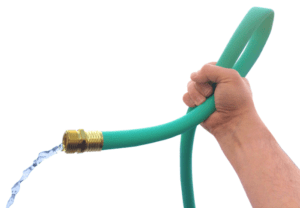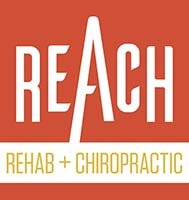What causes elbow pain?
Does it hurt to use your Elbow? Maybe your elbow even hurts at rest. You could have a structural injury, which is RARE, or you could just have an elbow joint that just isn’t moving properly. In this article, we will discuss the causes of elbow pain that we commonly see at our office.
Even if you have been struggling with elbow pain for months, or even years, it’s not unusual to get better, quickly with the right care plan.
Why elbow pain occurs?
There can be several causes of pain in or around the elbow joint and you could be experiencing it for a multitude of reasons.
People always associate these symptoms with structural issues, such as a muscle/tendon tear or ligament damage. Fortunately, these causes of elbow pain are RARE, and you should not be alarmed if you were not involved in a trauma, such as a major fall or a blunt force to the area. The odds of a structural pathology being present in the absence of trauma is extremely rare. Furthermore, if you were involved in major trauma, your chances of having structural damage increase, but it is not a direct correlation. Meaning that not every case of elbow pain, associated with trauma, presents with structural damage.
The most common source of elbow pain is poor joint mechanics. An interference of proper joint movement eventually leads to sensitivity of nerves and soft tissue structures (muscles, tendons, and ligaments) around the joints, thus causing pain.
Is elbow pain arthritis?
“But my physician took X-rays and told me my elbow has arthritic changes.”
Yes, arthritis is commonly found in the elbow joints. Arthritis occurs in all joints of the body, especially as we age. If you’re over the age of 50, you’ve got arthritis — it’s a natural aging process. Arthritis is like grey hairs and wrinkles but on the inside. Unless you have arthritis beyond what’s expected for your age, it’s not the problem causing your pain.
RARELY is arthritis the cause of pain. It is more so a contributing factor. Arthritis can alter joint mechanics, increasing the sensitivity of surrounding tissues.
Is elbow pain tendinitis?
“But I was on the YouTube and I think I have golfer’s elbow or tennis elbow (tendinitis).”
Elbow pain near the flexor or extensor muscles, can be the symptom of a tendon issue. The symptoms are usually present in athletes or individuals with a sudden increase in physical activity over a short period of time. However, if your elbow pain is not activity-dependent — such as my elbow hurts when I finish my second set of biceps curls — tendinopathy is less likely.
Improper joint movement is still the more common cause of elbow pain near the forearm. Especially if you have elbow pain where you can’t straighten the arm.
Your elbow pain is more serious when it’s constant, excruciating, and severely limiting your ability to perform your daily activities. If this has happened as the result of an injury or trauma, seek medical attention ASAP. If it’s been progressively worsening over months to years, hopefully, you’ve sought treatment at some point. If not, it’s not too late.
Can you have elbow pain without injury?
Not all elbow pain is a result of damage or injury to the elbow.
Wait, WHAT!? Well, let me discuss what this means.
Pain in the elbow, or anywhere in the upper extremity, is commonly a symptom of a neck or upper back issue.
But I don’t have any neck or back pain. Why would you say my elbow pain could be coming from my spine?
Well, most likely you’ve heard of sciatica. Sciatica is a common symptom originating from the low back. A similar phenomenon can occur in the arm in relation to the neck and upper back. Classic sciatica presents as pain, numbness, or tingling down the back of the leg and can even travel to the calf or down to the foot. These symptoms are commonly caused by irritation of joints in the spine.
The irritated joints can cause interference of the nerves that leave the spine. All the nerves that leave the cervical (and upper thoracic) spine converge and form the brachial plexus, which then feeds into the arms. It is important to note that any irritation of spinal joints, caused by poor joint mechanics, can cause symptoms to present anywhere along the path of nerves that leave the spine. So, it is possible to have “referred” symptoms from the spine that are only focal around the elbow joint.
As an analogy, think of a kinked hose: the issue is a lack of water flowing down the hose, but the source of the problem is the kink itself.
This is a VERY COMMON cause of elbow pain that we see daily at REACH. Findings commonly associated with this form of elbow pain are:
- Elbow pain accompanied by neck/upper back pain or stiffness
- Elbow pain that worsens when sitting for long periods of time.
- Elbow pain that improves after changing postures.
- Elbow pain without movement.
Kinked hose analogy: the issue is a lack of water flowing down the hose, but the source of the problem is the kink itself.

The neck and upper back are a more common causes of elbow pain than you think.
How to fix elbow pain.
Who to see for elbow pain?
Elbow pain can be difficult to treat on your own because you must first identify the source(s).
A clinician trained in Mechanical Diagnosis and Therapy (MDT) can clarify whether the symptoms are sourced from the neck, a nerve, a tendon, or the elbow joint itself.
Furthermore, there could be multiple sources. Have you heard the saying, “you can have ticks and fleas?” We’ve seen both the neck and elbow involved on several occasions.
Knowing the cause(s) of symptoms ensures the proper application of the best treatments and strategies to correct the problem as quickly as possible.
Hands-on active treatments with specific exercises have been proven to be the most effective. In rare cases is surgery absolutely needed. Can you imagine how many elbow surgeries have been performed where conservative treatments of the elbow failed, but the spine was never assessed as a possible source?!
Pain is frustrating. At REACH, we take the guesswork out of healing. We use a holistic chiropractic approach, assessing the body as a whole rather than treating just the symptoms. So you can do more than relieve pain. We teach you how to become unstoppable.


